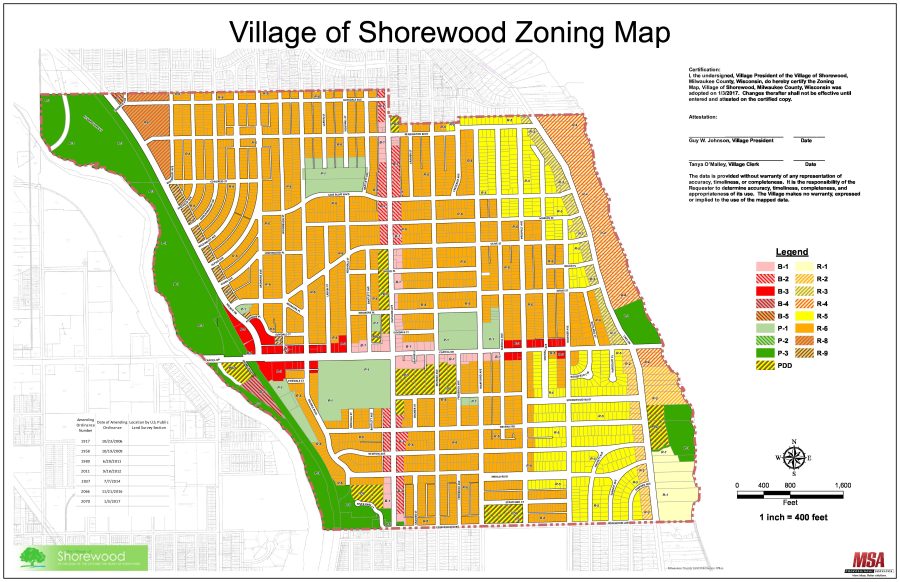New zoning regulations to be voted on
The commercial and mixed-use district map created for the public hearing draft
The process of creating new commercial zoning regulations came to fruition in January of 2022, when a working group was formed to create a drafted update to these rules.
Bart Griepentrog, Planning and Development Director of Shorewood, has played an active role in the updated code’s creation and potential adoption.
“The plan was commissioned several years ago, and the village board provided budgetary funds to [begin drafting] in 2022,” Griepentrog said. “We’re hopeful that it can be reviewed and approved in the next two months [so] that we can move on to other things.”
The need for a new zoning update became apparent when new development provoked feelings of disapproval and surprise for many residents of Shorewood.
“The purpose of [the new zoning code] is to get more predictable development and more predictable business uses in the village,” Griepentrog said. “Development in the past 10 years has been somewhat controversial with different groups of people because it didn’t match what they expected it to.”
Public involvement was a crucial part of the procedure, as workshops, meetings and working groups were held for the purpose of receiving villagers’ feedback.
“We wanted to hear those opinions…and we hope that we’ve heard the community voices that we need to hear. I think it’s been a good process,” Griepentrog said.
At one meeting, members of the community were given the opportunity to rank photos of building fronts based on which they preferred most and least.
“This is a very cool example of an opportunity for citizens to have an impact on how their village ends up looking,” said Charles Hagner, a member of the working group created by the village. “This is really what government and politics is all about.”
Although aligning with many aspects of the zoning laws already in place in Shorewood, the updated code is more specific in its regulations of building size and appearance.
“People ended up feeling frustrated and even betrayed by what ended up being built by the village, buildings that ended up looking more monolithic, taller, and bigger,” Hagner said. “If you looked at the [current] code there was really no reason why they couldn’t be built.”
If implemented, the updated code will regulate building height, width, roof material, tree installation, and a variety of other factors. Many limits are dependent on building type; storefront buildings, for example, must be between two and five stories and have at least one entrance located every 60 feet of the primary facade.
Under the current zoning code, commercial property owners have had more freedom in terms of building proportion and design. According to Griepentrog, the issue is that this isn’t always consistent with what the community wants.
“This new zoning code would eliminate that kind of design process and tell the developers what they have to do,” Griepentrog said. “The goals were predictable developments with the comprehensive plan recommended that we do this so that the community in general has an easier understanding of what is coming down the line.”
The process is almost completed, and now must be voted into effect before being adopted.
“I would expect [the Village Board] to vote yes, but it hasn’t happened yet so I can’t say that [for sure],” Hagner said. “We just have to wait and see.”
Overall, the collaboration between the Village Board and villagers has proved to be a smooth process.
“This was a good experience for me because it was pretty clear that people [care] very much about Shorewood, and they [love] living here,” Hagner said. “They [want] to make it as good as it can be.”

